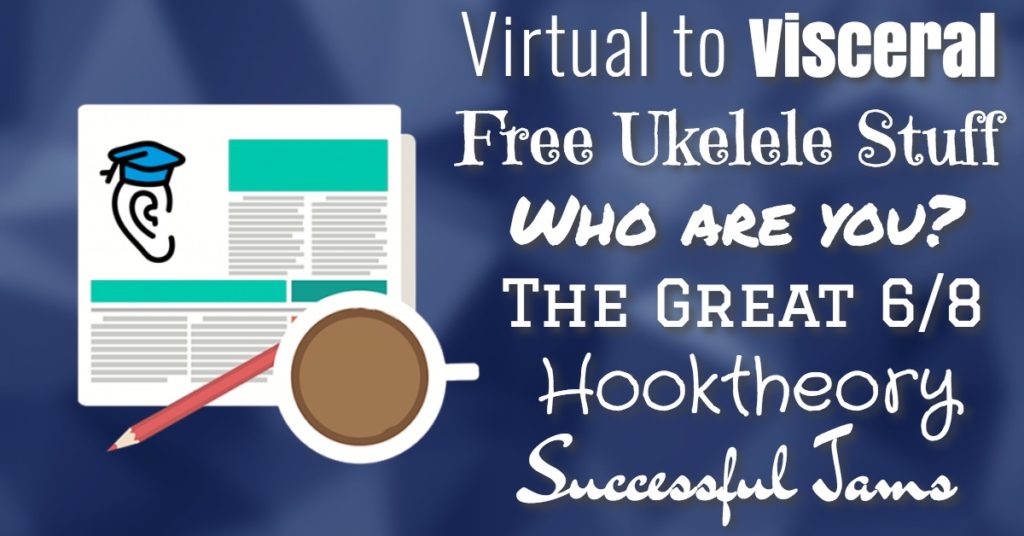At Easy Ear Training, we gravitate towards music educators that not only mix ear training skills with music theory, but to those that make the sometimes frustrating process of learning music theory accessible—and fun!—with the innovative use of technology.
It’s not just the learning of music theory that can be frustrating, though. Obstacles can be found on all legs of your musical journey. From playing music with others, to studying music in a high school classroom, to building a music career, we believe that all endeavours in music should be rewarding and not discouraging experiences.
Hooked on Hooktheory
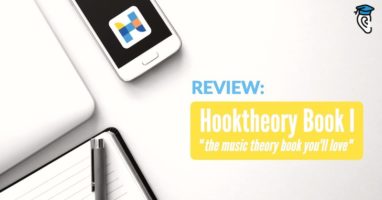 A great example of those who combine music theory with listening skills is the team behind Hooktheory. At the forefront of innovative music theory teaching, Hooktheory, a multimedia music theory guide, is designed to take someone from zero knowledge of music theory to a comprehensive understanding of how melodies and chords work. A few years back, we interviewed Hooktheory team member David Carlton about their approach . They’ve recently released the second volume of their guide, Hooktheory Book II so we thought it was time to take a closer look at the original, Hooktheory Book I.
A great example of those who combine music theory with listening skills is the team behind Hooktheory. At the forefront of innovative music theory teaching, Hooktheory, a multimedia music theory guide, is designed to take someone from zero knowledge of music theory to a comprehensive understanding of how melodies and chords work. A few years back, we interviewed Hooktheory team member David Carlton about their approach . They’ve recently released the second volume of their guide, Hooktheory Book II so we thought it was time to take a closer look at the original, Hooktheory Book I.
Innovative piano teacher Tim Topham, who we’ve recently interviewed on Easy Ear Training, calls Hooktheory “really unique…and brilliant”. Read Tim’s blog post to learn more about “one of the coolest things” he’s found on the internet for music teaching.
Tim refers to an analysis of 1300 pop song chords. Here is the complete analysis which formed the foundation of Hooktheory.
Hookpad is a “musical sketchpad” app by Hooktheory that allows you to create simple melody and chordal accompaniment. Professor Jesse Rathgeber, a music maker, educator and researcher, took Hookpad for a test drive:
Creating A Virtual and Visceral Music Classroom
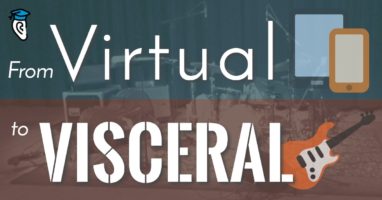 Bob Habersat and Paul Levy are two cutting-edge suburban Chicago music teachers. Recently, we had the opportunity to ask these music education mavericks about how they’re making music education “real” for their students by recreating it based on real-world professional music skills. In the second part of our interview with Bob and Paul, we asked them about how their new innovative website called Shed the Music is teaching tomorrow’s musicians to teach themselves and how they are utilizing the Chicago live music scene as a classroom.
Bob Habersat and Paul Levy are two cutting-edge suburban Chicago music teachers. Recently, we had the opportunity to ask these music education mavericks about how they’re making music education “real” for their students by recreating it based on real-world professional music skills. In the second part of our interview with Bob and Paul, we asked them about how their new innovative website called Shed the Music is teaching tomorrow’s musicians to teach themselves and how they are utilizing the Chicago live music scene as a classroom.
Bob and Paul are fortunate to have the use of iPads in their music classroom. For a resource of iPad apps to use in the classroom, have a look at this list from Educator’s Technology.
They also make a point of taking their students out to experience live music in the Chicago area. For more good reasons to expose your students to the benefits of live music, have a look at this blog post from Music Together.
We featured violin teacher Eloise Hellyer recently and her insightful approach to teaching. In her blogpost, Eloise explains why it’s important to take children to live concerts.
As she was trying to put into words what defined lessons that could make a musician instead of a one-song-wonder, Gina Weibel of Let’s Play Music came across our interview with Dr. Chad West and featured it in their article “Are Music Lessons Holding Me Back?” With the trend towards reinventing music education, Dr. West’s five core skills of musicianship are a good foundation for putting musicianship back into music education.
Who Are You? (Your Audience Really Wants to Know!)
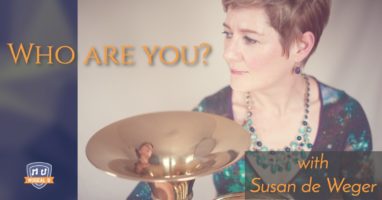 Notable Values, a resource for independent thinking about self-identity, career development and success for musicians, was founded by Susan de Weger after leaving behind her “broken musical identity” to become a very successful entrepreneur and consultant in the UK. Interestingly, she rediscovered her musical identity along the way and now guides the careers of aspiring musicians into the 21st century.
Notable Values, a resource for independent thinking about self-identity, career development and success for musicians, was founded by Susan de Weger after leaving behind her “broken musical identity” to become a very successful entrepreneur and consultant in the UK. Interestingly, she rediscovered her musical identity along the way and now guides the careers of aspiring musicians into the 21st century.
Musical U recently asked Susan about how she fixed her broken identity and the evolution of the music profession. In part three of Musical U’s fascinating interview with Susan, they had the opportunity to ask her about the importance of identity in career choices and artist’s statements.
Many organizations now require an artist statement to be considered for admission. The University of North Carolina shares these tips for writing an effective artist statement.
If you are an artist or ensemble, you must be prepared to explain your brand and vision concisely and clearly. Music Consultant explains how to write an “elevator pitch”, which is a short message that is easy to share with others online and in person.
Do you want to know how to stand out from the crowd? DJ Tech Tools teaches you how to create a unique artist identity and how to present it to the world.
Getting a Feel for 6/8 Time
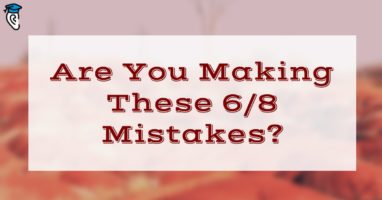 Why can’t all songs be written in 4/4 time? After all, it’s the most common time signature and easy to count. We often expect pop and rock music to be written in the classic 4/4 beat, but it turns out that a surprisingly large number of songs we all know and love actually use 6/8 time.
Why can’t all songs be written in 4/4 time? After all, it’s the most common time signature and easy to count. We often expect pop and rock music to be written in the classic 4/4 beat, but it turns out that a surprisingly large number of songs we all know and love actually use 6/8 time.
Life doesn’t have to be difficult, though, just because a song is in 6/8! There’s actually a fun and easy way to get the “feel” of 6/8 time for your own music-making or just to tap along to your favorite song. We take a closer look at why this time signature distinctive, how it works, and how you can learn to hear and play it.
Are you looking for more instruction on how to feel 6/8 time? Angela Patterson Music reviews how many beats each eighth, quarter and dotted quarter note receives in this video tutorial.
“Greensleeves” is one of the most recognizable melodies in 6/8 time. In this video Classical Guitar Shed breaks down how to count this popular tune:
When we think of jazz we often think of songs swinging in 4/4 time. How, then, do you count a jazz waltz? Matt Warnock Guitar explains how to jam to the jazz waltz style in this article.
Best Uke Songbooks
 Are you interested in learning a new instrument, but don’t want the challenge of, say, the guitar or piano? Well then don that grass skirt and lei sitting in your closet and pick up a ukulele! Group ukulele classes have become increasingly popular recently, partly due to the fact that the ukulele is a versatile instrument and relatively easy to learn.
Are you interested in learning a new instrument, but don’t want the challenge of, say, the guitar or piano? Well then don that grass skirt and lei sitting in your closet and pick up a ukulele! Group ukulele classes have become increasingly popular recently, partly due to the fact that the ukulele is a versatile instrument and relatively easy to learn.
Musical U scoured the internet to find the best websites and resources for all of your ukulele needs, from finding an appropriate songbook to helping you to improve your skills, all while dreaming of Hawaii.
Perhaps you are a new ukulele player and don’t know which songs to learn first. UkuTabs lists 99 of the most played songs on ukulele with chord charts and tabs.
Do you know how to play three chords on the ukulele? Well, then you’re in luck because The Ukulele Teacher explains in this video how you can learn to play hundreds of songs with just three chords!
And if you learn just one more chord, Ukulele Go! has hundreds (if not thousands!) of more songs for you to try out.
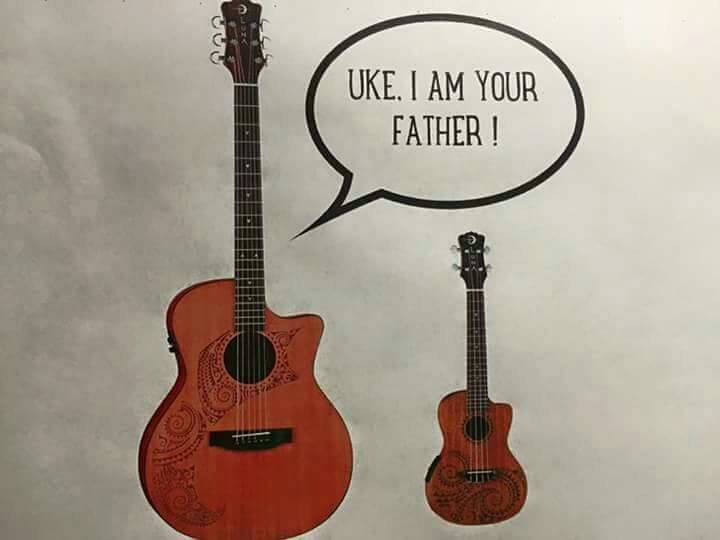
Jam Away!
Ukulele jams are all the rage these days for a good reason—they’re fun! Are you looking for a fun and rewarding musical adventure, even if you haven’t been playing an instrument for very long? Join a jam session! If you’re a bit nervous about jumping in, though, Easy Ear Training and Musical U mastermind Christopher Sutton suggests nine tips for a successful jam session in this article for Making Music Magazine, which is part of a series of guest posts.
We’ve come across many organizations and educators who have begun reinventing the way we teach and even think about music by way of creative ideas, technology and by just getting out there and participating in it.
There are so many ways in which music education or a musical career can be enjoyable and we’ll continue to bring to you the advice and ideas of the innovators who are working hard to make learning music the enriching experience it’s meant to be.

